Halloween Spider
The Marbled Orbweaver (Araneus marmoreus) is one of the most common large orb weaving spiders in North America. It is particularly abundant in Ohio. Even so, many people here never notice them. I believe that this is because they live in wooded areas, typically come out only after dark, and hide in a retreat during the day.
This species is extremely variable in color and pattern. Here is Steve Buchanan’s painting of some color forms of the species from plate 9 in Common Spiders of North America:
The most common color forms encountered here in Ohio are the yellow and orange varieties. Like most large orbweavers, the Marbled Orbweaver lives less than one year. Young emerge from the egg case in the spring. At that time they are tiny and inconspicuous. By early summer they have grown to small juveniles (1/8 to 1/4 inch body length), and are typically cream or pale yellow with little pattern. By mid summer they are large and well marked. If you encounter one in its web at that time of year, they bear a conspicuous pattern on the abdomen.
This species builds a beautiful orb-shaped (circular) web low in a tree or herbaceous vegetation near the ground. Most individuals re-build their web every evening. Sometimes they replace only the sticky spiral portion. This difference probably depends upon how much the web is damaged by the previous night’s hunting activity. From the center of the web (the hub) there is a taut “signal line” that extends into the retreat. The spider often stays in the retreat with one or more legs touching the signal line, only emerging when a prey item becomes entangled in the web. She detects the presence of the prey via the signal line which transmits the vibrations made by the struggling prey. It only takes her a moment to rush out to the web, find the prey, and bite. The spider often bites insects on their underside. This ensures that the venom will paralyze the victim quickly because the central nerve cord of insects runs along the midline there.
I often use a simple vibrator (inexpensive dental tool) to lure spiders out of their retreat. When she comes out and finds no prey item, she quickly retreats.
In the summer you may also encounter a male Marbled Orbweaver. These are leggy beasts, with a relatively small abdomen. After achieving maturity, the males spend their short lives searching for females. They quit building capture webs and wander through the vegetation, following pheromone scent trails to females.
For me one of the fun natural events in Ohio every October is the appearance of “Halloween Spiders.” These large, fat, bright orange spiders seem to appear on cue as the spooky holiday approaches. In fact, these are the orange color form of the Marbled Orbweaver. I’ve recently discovered that the very same individuals that have the typical yellow abdomen in summer, turn orange in October. This may correspond to the changing leaf colors. Many spiders, most famously the flower crab spiders, can change their color to match their background, and thus remain camouflaged. The odd thing in this case is that Marbled Orbweavers are often conspicuously colored, not camouflaged at all, as anyone can see from the other photos in this post.
These fat orange spiders are pregnant females, their abdomens swollen with hundreds of eggs. Sometimes people find them walking on the ground, driveway, or patio deck. In late October, a grape-sized bright orange spider conjures up the image of a miniature pumpkin, and I have received many excited email messages about them over the years. Fortunately I can re-assure the correspondent that this is merely a harmless female spider searching for a good place to lay her eggs. Perhaps this is the reason for the camo color, because walking through the fallen leaves in the daytime is a real departure from their summer reclusive behavior. These females will die soon after laying their eggs, often coincident with the first hard frosts of autumn.

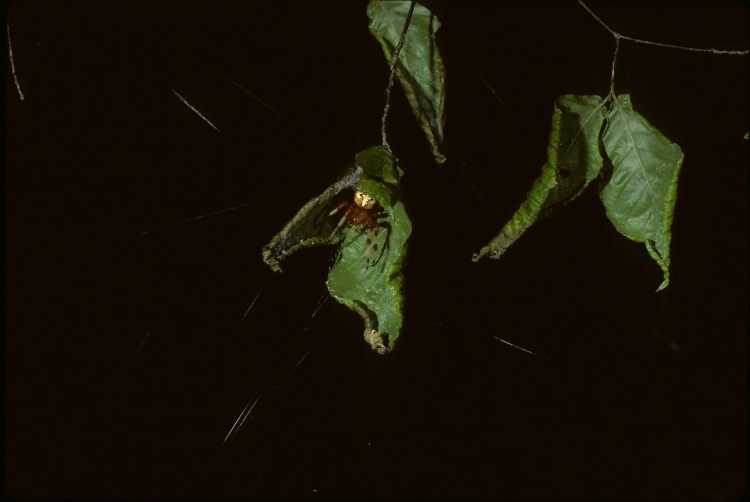
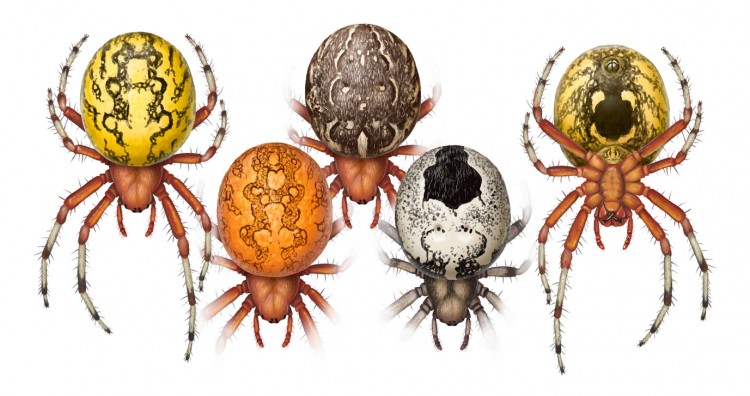
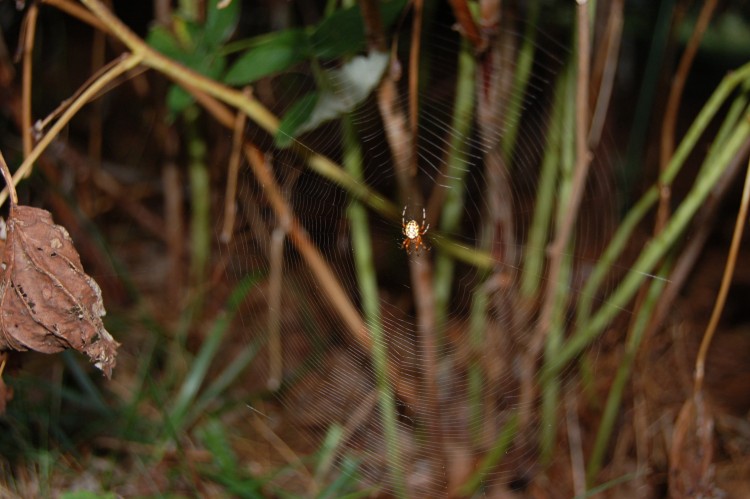
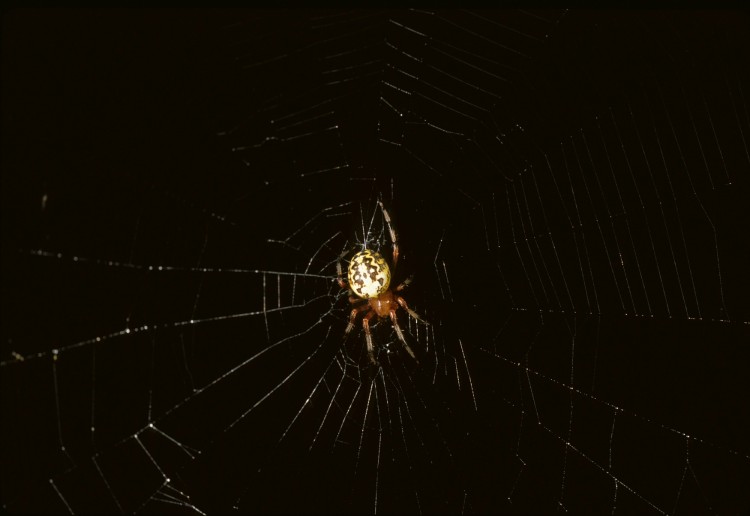
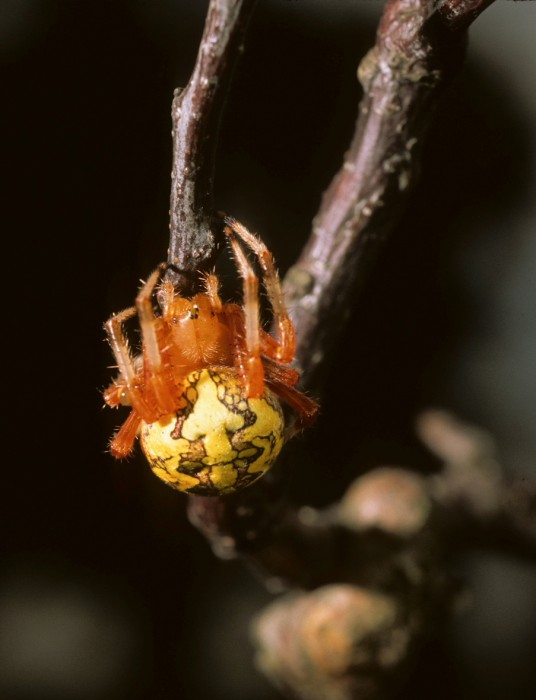
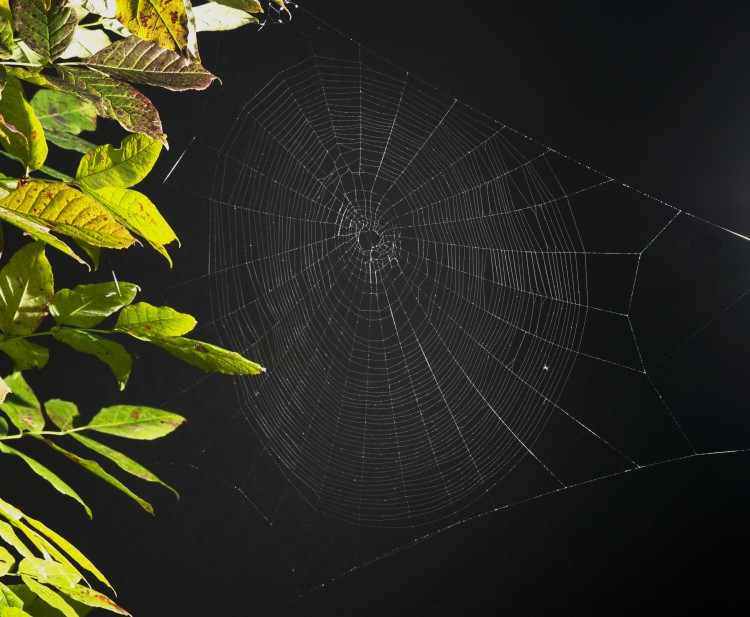
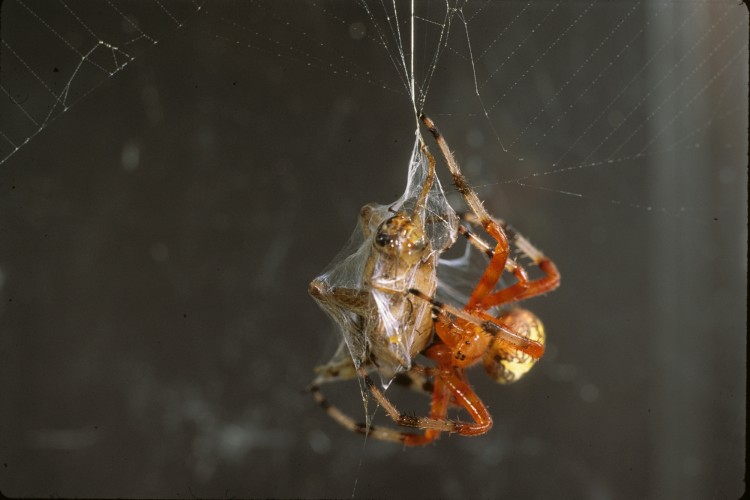
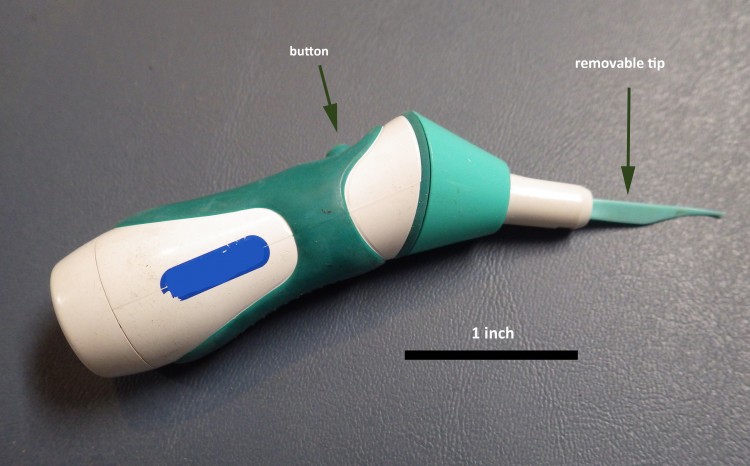
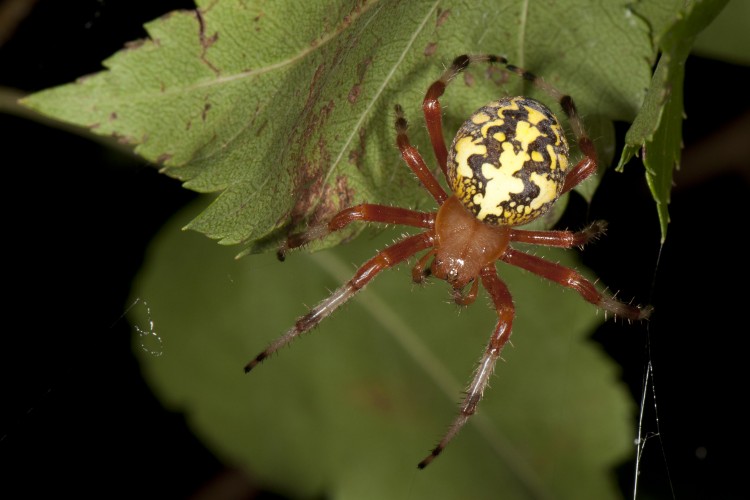
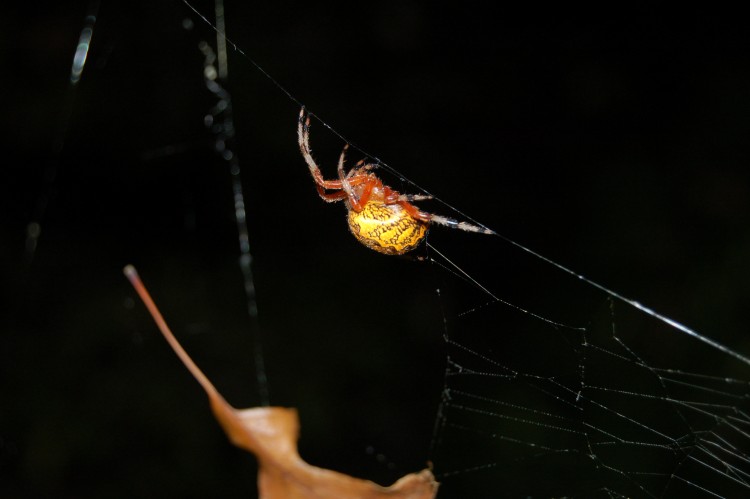
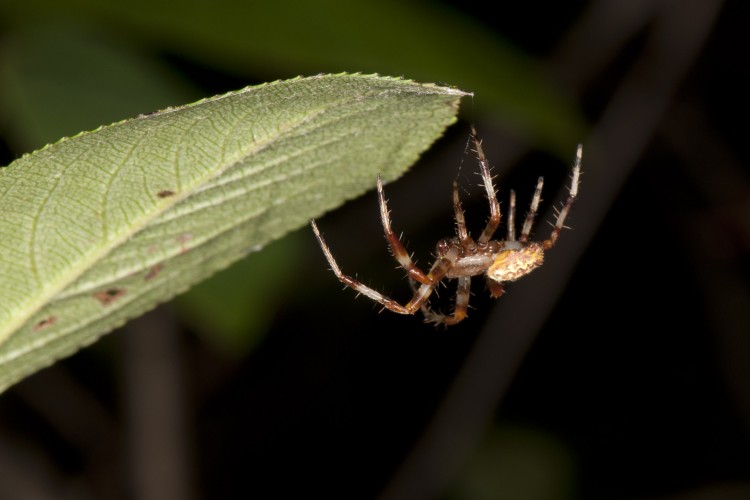
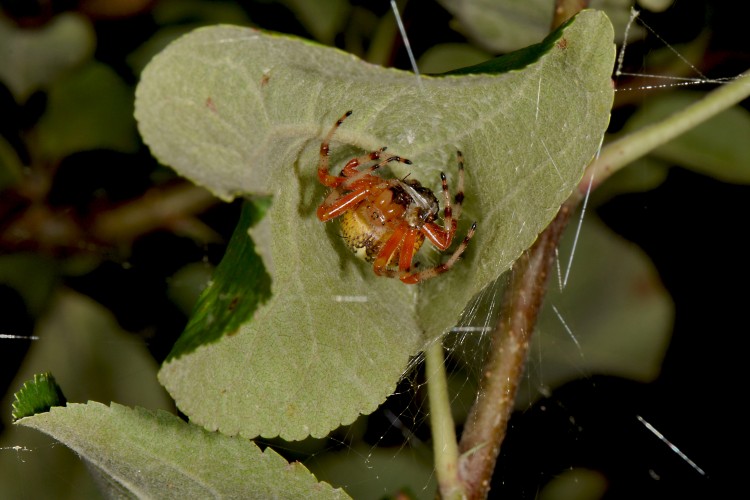
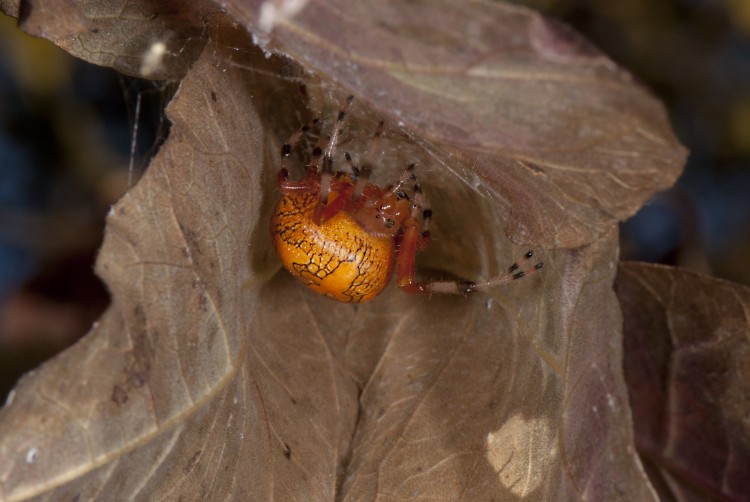
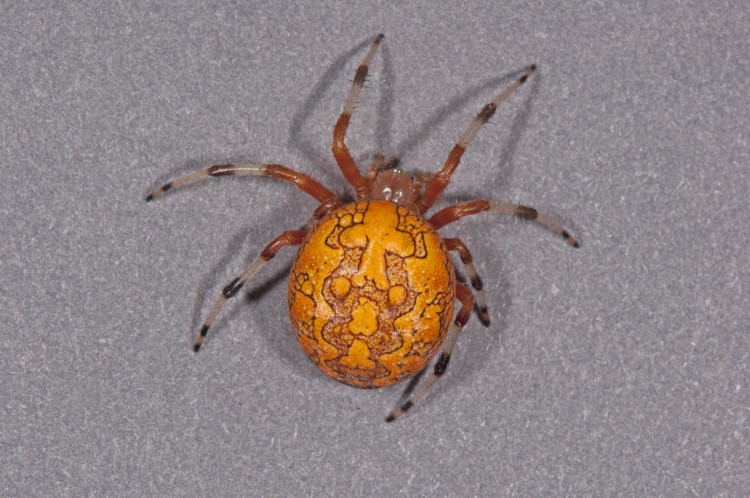
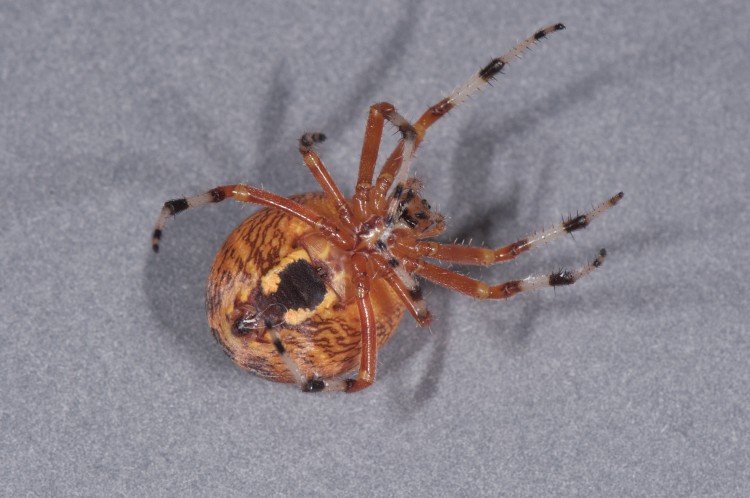
I live in Eastern Washington and I’ve found a brown and white variety living in my door frame. She’s been there for months.
I’m constantly shooing her away from coming into the apartment as I think she considers it a good place to lay eggs.
Interesting, I’m not sure which species you are referring to, Marbled Orbweaver? I’m unaware of a brown and white color form but given the variety in this species it is certainly possible. If you get a photo, I’d love to see it.
I found an orange one in N.C. I photographed it with a Nikon D3100 a couple years ago around October… beautiful, slow, clumsy creature.
I found an orange fat clumsy one today ( November) in central Mississippi.
Justin, maybe you would be willing to share your photo? You can send it to me as an attachment to marionbiology at osu.edu I’ll post your photo on the blog after I get it.
I live in Melbourne, Australia and have just seen a Halloween spider in my backyard
Lee, I don’t know of any records for Araneus marmoreus for Australia, or anywhere else in the southern hemisphere. I certainly never saw any while was living there in the 1980’s. But there are 91 species of the genus Araneus listed for Australia, and I wouldn’t be surprised if one of those closely resembles A. marmoreus. Or perhaps this species has been recently introduced. If you could send me a photo, I’d be very happy to have a look. You might also want to consult the Australian Arachnologists web site: http://www.australasian-arachnology.org/
I live in alaska and these seem to be everywhere outside of my house, is it possible that they were carried here through a suitcase or something? I killed at least 10 of them on y garage two days ago with my sister and ive been trying to figure out what species it is…
Believe it or not, even in Alaska there are hundreds of species of spiders. Without more information and perhaps a specimen, it would be impossible to know what kind you are having trouble with. The best approach is to get a specimen and send it to an arachnologist (spider specialist). Failing that, you can send a photo (a good close up). Here is a link to my submission page: http://osumarion.osu.edu/SpiderWeb/howtomail.htm
I live in Devon in England and I am sure this is what I found in my garden, is it possible for it to live here in the UK
The species (Araneus marmoreus) does live in Europe and the UK. The color forms that are common there are usually different, but it seems possible that you might have this color form there.
Thank you for this information. I am still a little less wise, as I found a similarly described spider in my basil bush. I have a photograph, which I would be happy to share for further identification, as I am unable to attach here.
Best regards,
William,
Thanks for writing. I hesitate to post my email contact because of the tsunami of junk email and worse I get. So if you want to post photos and get suggestions for ID, check out the facebook Spiders Ohio group. There are a number of readers who post ID’s for photos (when it is possible from a photo), and I try to check that page relatively often. You could submit your photo and we will reply.
I found one of these spiders in north germany last week .
Mark, In Germany Araneus marmoreus is possible, but the orange form isn’t as likley. There are other large orange orb-weavers there including Araneus alsine or Araneus quadratus.
Found one in Amherst County Virginia.
Is it poisonous? I found a pregnant one.
Kathy, Araneus marmoreus, like almost all spiders, has venom that it uses to subdue its insect prey. The venom is not particularly dangerous to humans, so if bitten by this spider (not a likely event) the result would probably be similar to a bee sting. Orbweavers are famous for being very reluctant to bite, even when handled. Perhaps they are reticent to waste venom on non-prey. The term “poisonous” is properly used to refer to something that is eaten. Spiders and scorpions would be referred to as venomous, and in the case of a few scorpions “toxic” to humans.